October 13, 2013
I had tempered hopes for finding new and interesting migrants when I left home before sunrise Friday morning. Fall break, a whopping two days, allowed me to forget about classes and go anywhere I desired.
I do most of my birding and natural historizing inland, at sites relatively close to DeLand. Coastal sites, both on the Atlantic and Gulf coasts, routinely produce higher diversity and abundance of neotropical migrants than do inland sites, but I always feel a little guilty burning gas for longer road trips when cool stuff is surely nearby. The superiority of coastal sites isn’t surprising given that many of the migrants I’m most interested in follow migratory paths that take them out over open ocean or gulf, and come to land when forced down by storm fronts or local weather systems that forestall their long-range movements. So they tend to concentrate along the coasts until conditions improve, during which time they can replenish their fat reserves for the long flight to come. If conditions are good, many migrants bypass Florida entirely en route to the tropics.
Tomoka State Park was my primary destination, where veteran bird-bander Meret Wilson had reported some great birds in the preceding week (including a Swainson’s warbler, which would be a lifer for me). I had misgivings though, as Friday morning followed two nights in a row of clear skies, which tend to favor departure of migrants that have been delayed along the coast. That apparently was the case on this Friday morning, as Tomoka was mostly devoid of anything other than resident species like northern cardinals and Carolina wrens. One small flock that included an American redstart, a yellow-throated warbler and a couple of prairie warblers contained the only migrant passerines I found there.
The great thing about natural history and biotic diversity, though, is that there is always something cool going on somewhere. So mid-morning found me back inland, at Heart Island Conservation Area. This was the SR11 entrance to Heart Island, just a bit north of the intersection of SR40 and SR11. The mostly flatwood habitats there were full of fall composites attracting a diversity of nectaring butterflies. The flora included several of the purple-flowered species, including Carphephorus corymbosum, a couple of species of blazing star (Liatris spp.), big gorgeous patches of Balduina angustifolia, and a species of Palafoxia I hadn’t seen before. The biggest attractor for butterflies on Friday morning were the big white-topped asters (Sericocarpus tortifolius; thanks, CB), some of which produced flowering spikes over six feet tall. They were buzzing with activity from both butterflies and bees.
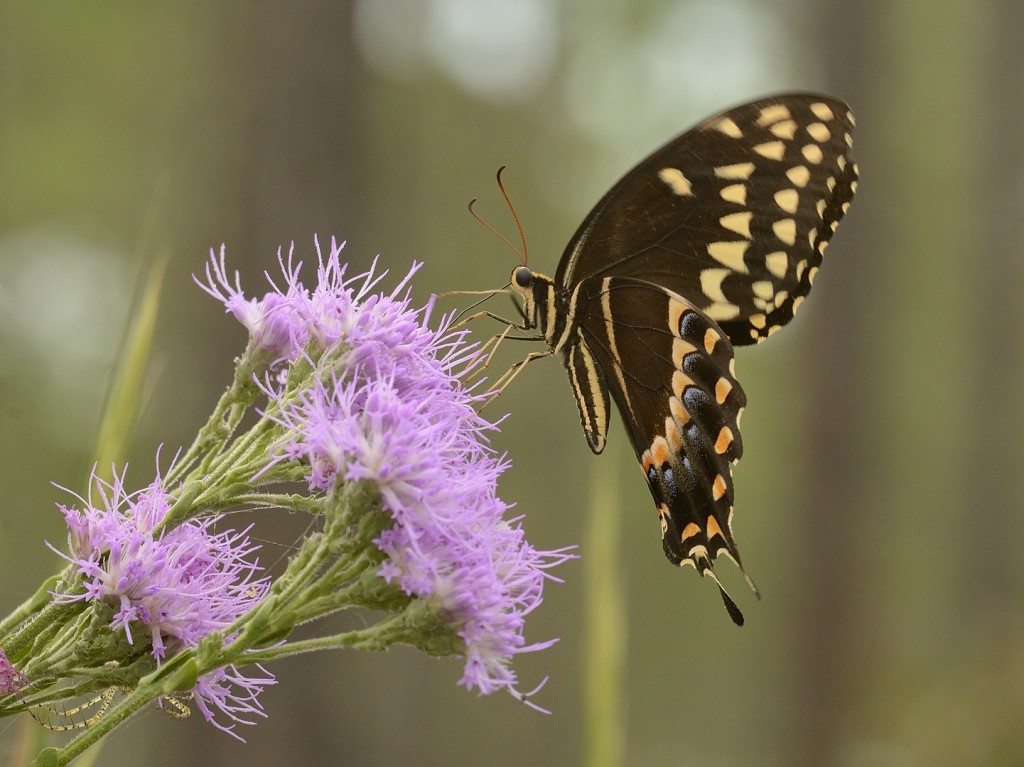
Palamedes swallowtail (Papilio palamedes) at Carphephorus corymbosum. Heart Island Conservation Area
Butterflies visiting these big composites spanned a huge range in size, from small drab orange skippers to gargantuan tiger swallowtails. There were also several viceroys at one of the clusters, indicating that there were willows nearby. Viceroy larvae feed mainly on willows, and the adults don’t seem to wander far from the vicinity of their larval foodplants. The most exciting lep, to me, nectaring at the Sericocarpus was a single great purple hairstreak (Atlides halesus), a species that I just photographed for the first time a couple of months earlier. Hairstreaks are among the smallest of the butterflies, but great purples are giants amongst their confamilials. And this one was not only in pristine condition, but was very deliberate in his foraging movements, repeatedly visiting the same flower clusters and working slowly from one disc flower to the next. I spent more than a half-hour tracking this one individual, waiting for him to move close enough to me and position himself appropriately for photos.

Tiger swallowtail female at Sericocarpus. Females have extensive blue on the hindwing, lacking in males. Heart Island Conservation Area
While watching and waiting for this one butterfly, I found myself wondering about his spectacular color patterns, and what functions they might serve. How had natural selection favored the evolution of such a delicate piece of living jewelry?
Brilliant colors and striking contrast are two of the components of pattern in both butterflies and birds that attract so much attention and admiration from naturalists, yet it struck me that we understand relatively little about how these patterns are actually adaptive, beyond a few simple generalizations.
Hairstreaks, for example, are usually instantly recognizable by the adornments of the hindwings. Most have a pair of thin tendrils extending from the back of the hindwing, and the hindwing is often marked on the underside with spots of color that look something like eyes. When perched, most hairstreaks habitually rub their hindwings back and forth across each other slowly, while movements by the rest of the insect are slight and barely noticeable. The adaptive function of the tendrils, spots and movement seem to be to mimic a head and antennae, which presumably misleads potential predators into directing their attack to the hindwings. It’s not uncommon to see hairstreaks with symmetrical chunks removed from both hindwings, indicating that a predator wannabe fell for the ruse and got nothing but a mouth or beak full of chitin and scales. The hairstreak survives the attack only a little the worse for the encounter.
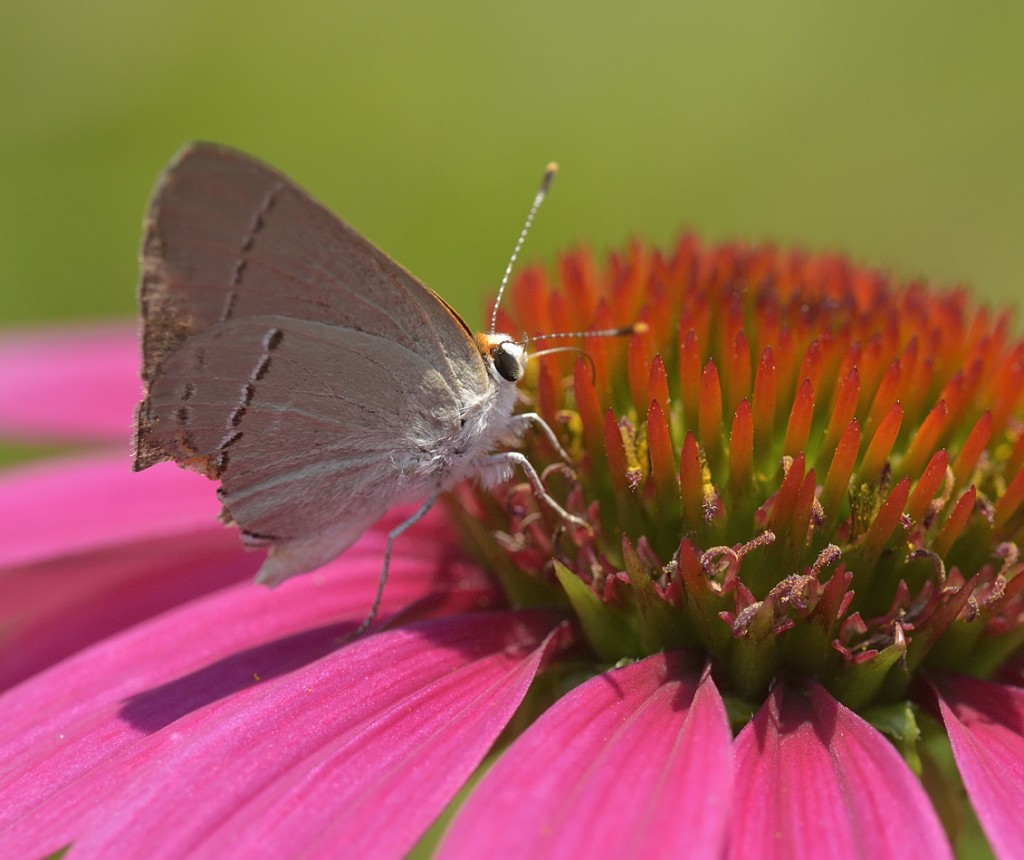
This gray hairstreak shows apparent predator damage to the rear of its hindwings, suggesting that the tendrils and eyespots there enticed the predator away from the head.
So I get that part. But what about the other pattern components that are so conspicuous, such as the patches of lime-green scales on the hindwings, and the brightly bicolored orange-blue abdomen? As much as I love all things Gator-related, that seems unlikely, although there are also some very cryptic grasshoppers that have brilliant contrasting orange and blue patches on the inside of their hindlegs, visible only briefly and sporadically, that must have some kind of signaling function. Why orange and blue?
And then there’s the southern aspect of a great purple hairstreak traveling north. Not only do they have the wispy tendrils and eyespots on the hindwings – they also have flanges extending from the rear margin of the wings that produce a remarkably face-like visage as the butterfly is walking away. What is that supposed to look like? I’m hard-pressed to ascribe a resemblance to any insect I can think of, but it seems likely to me that this is also a feature favored by natural selection somehow, perhaps because of some protective function.
The swallowtails represent an entirely different suite of characteristics, but are similar in some respects to the hairstreaks. Big, conspicuous, almost constantly in motion, brightly colored – the overall effect of the swallowtail motif can’t be concealment. A couple of the tiger stripes, however, converge towards the abdomen, and in many swallowtails there are conspicuously colored spots just below the convergence of these stripes that could function as eyespot mimics. The tails of swallowtails may serve a similar function to the tendrils of hairstreaks, attracting the attention of predators towards these disposable and dispensable wing pieces.
One big difficulty in interpreting color patterns and their functional significance lies in the realization that human observers often aren’t even seeing the color patterns other butterflies, or their predators such as birds, might be seeing. Many insects and some birds can see well into the ultraviolet range of the color spectrum, invisible to humans. Butterfly wings (and flowers as well) reflect heavily in the UV, so what appears to be a single color without any obvious pattern to us is richly patterned to a potential predator, conspecific, or nectarivore.
Even in species where we think we have a clear understanding of the significance and evolutionary logic behind butterfly color patterns, the full story is sometimes more complex than initially imagined. Take Viceroys, which traditionally have been considered to be a classic (Batesian) mimic of the unrelated monarch butterfly. Any decent naturalist can tell a monarch from a viceroy pretty easily; not only are there differences in specifics of the color pattern (especially a transverse black band on the upper hindwing of viceroys, lacking in monarchs), but also major differences in flight patterns. Still, as the old story goes, viceroys gain protection from predators because of their similarity to monarchs (and other danaids like queen butterflies). Monarchs are avoided by many predators because they feed on and store (sequester) toxic compounds from their larval hostplants, which include various species of milkweeds (Asclepias spp) and relatives (such as Sarcostemma). These compounds, called cardenolides, cause fairly immediate digestive upset in naïve predators that try to eat one, and they quickly learn to avoid any similar appearing butterflies in future feeding attempts. Monarchs have evolved a bright and conspicuous orange and black color pattern to warn potential predators of their toxicity. This pattern of warning coloration is known as aposematic coloration.
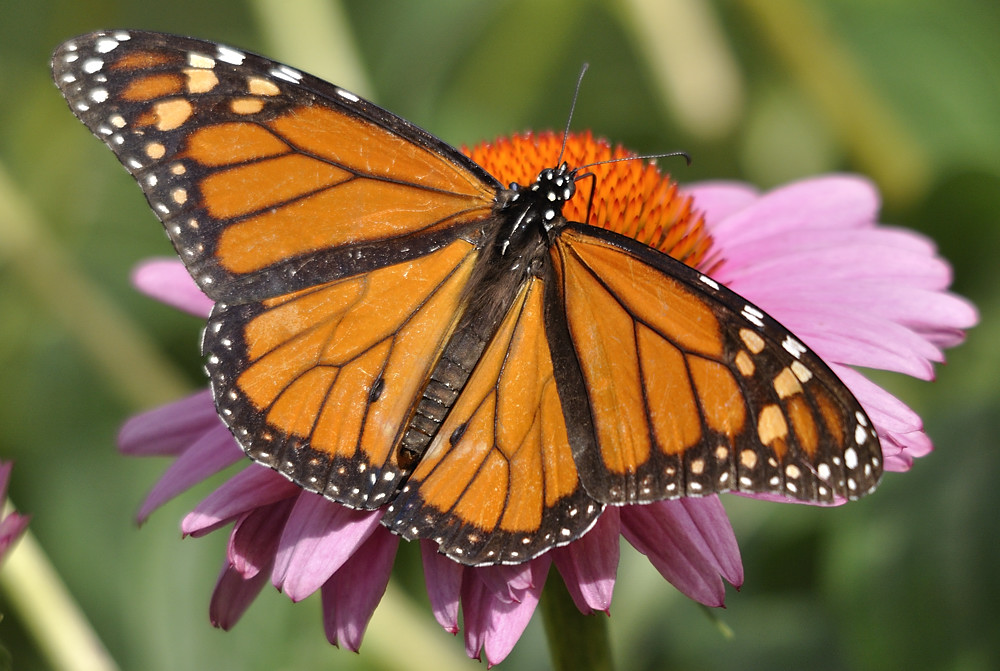
Monarch (Danaus plexippus). In the traditional explanation, the monarch is the model (unpalatable species) for the viceroy (palatable species) in a Batesian mimicry system
Viceroys, the willow feeders, were long considered to be perfectly edible, palatable insects that gained some protection by their resemblance to the emesis-producing monarchs. In a series of clever experiments, lepidopterist and evolutionary biologist David Ritland showed back in the 90’s that in some areas like south Florida, viceroys are actually more distasteful and unpalatable to bird predators than co-occurring populations of monarchs or closely related queens. The monarch and queen larvae in these areas feed mostly on species of milkweed (Asclepias tuberosa, Sarcostemma clausum) that have very low concentrations of cardenolides, leaving the danaid butterflies (monarchs and their relatives) relatively palatable. The viceroys, by contrast, sequester toxic phenolic glycosides from their willow hostplants. When abdomens of viceroys and queens were offered to predatory birds (red-winged blackbirds) in the lab, the birds rejected the viceroys more often than they did the queens. So in some areas, viceroys are apparently the more distasteful model (or co-model, in a form of shared aposematism called Mullerian mimicry) and monarchs and queens the more palatable mimics.
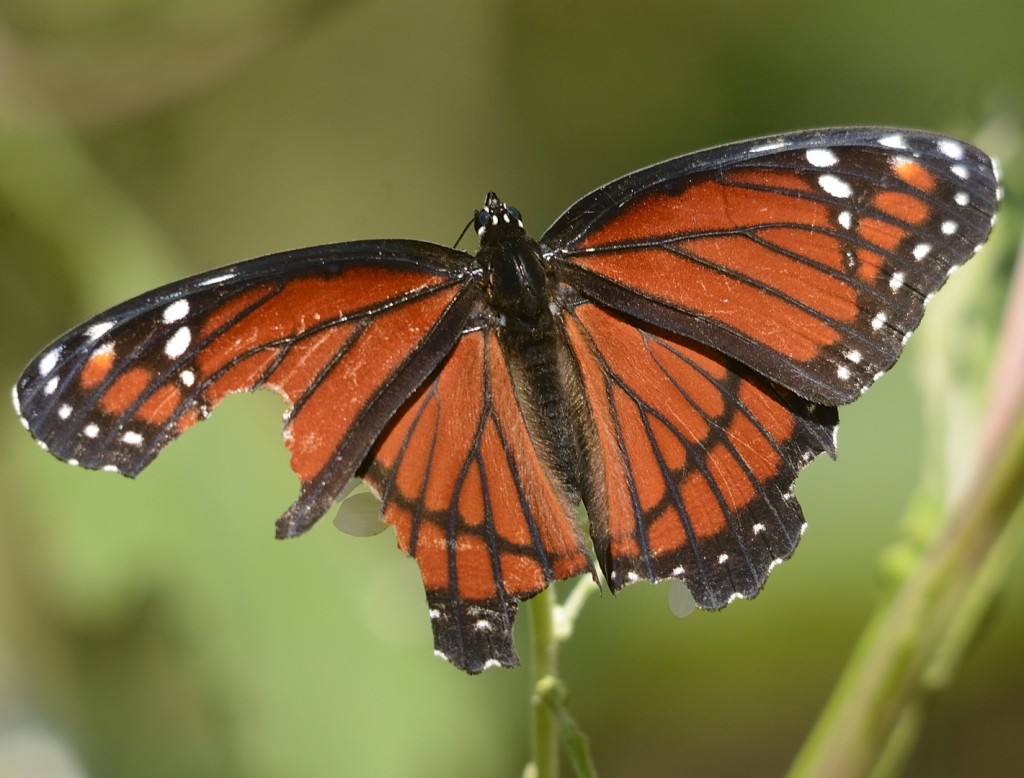
Viceroy with wing damage suggestive of a predator attack. Notice the symmetrical chunks missing from both hind wings, and the V-shaped pieces missing from the left wings. Most likely, a predator (bird, lizard?) grabbed the wings while this butterfly had them folded.
So maybe in science, as in life, a little humility is a good thing. It’s often the case that we don’t understand complex natural systems as well as we think we do on first consideration.
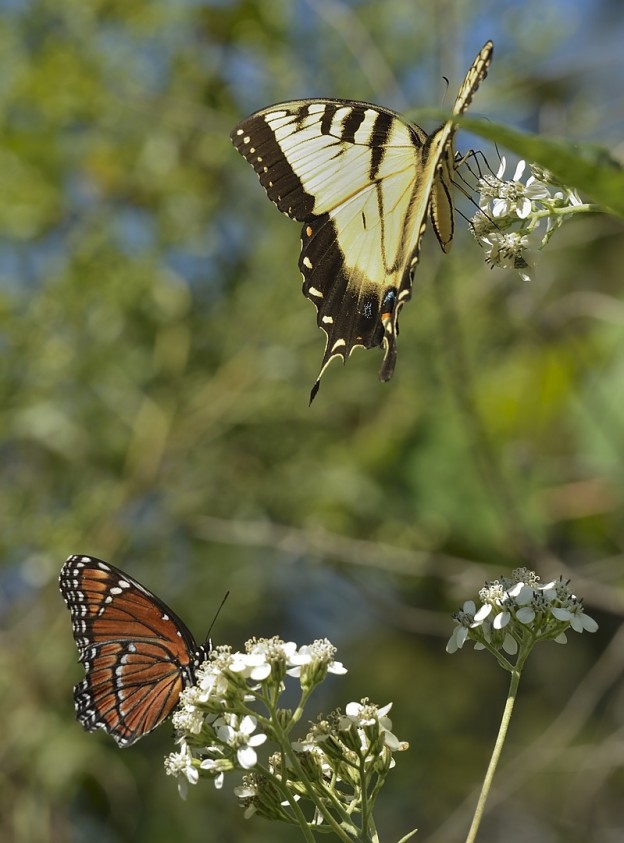
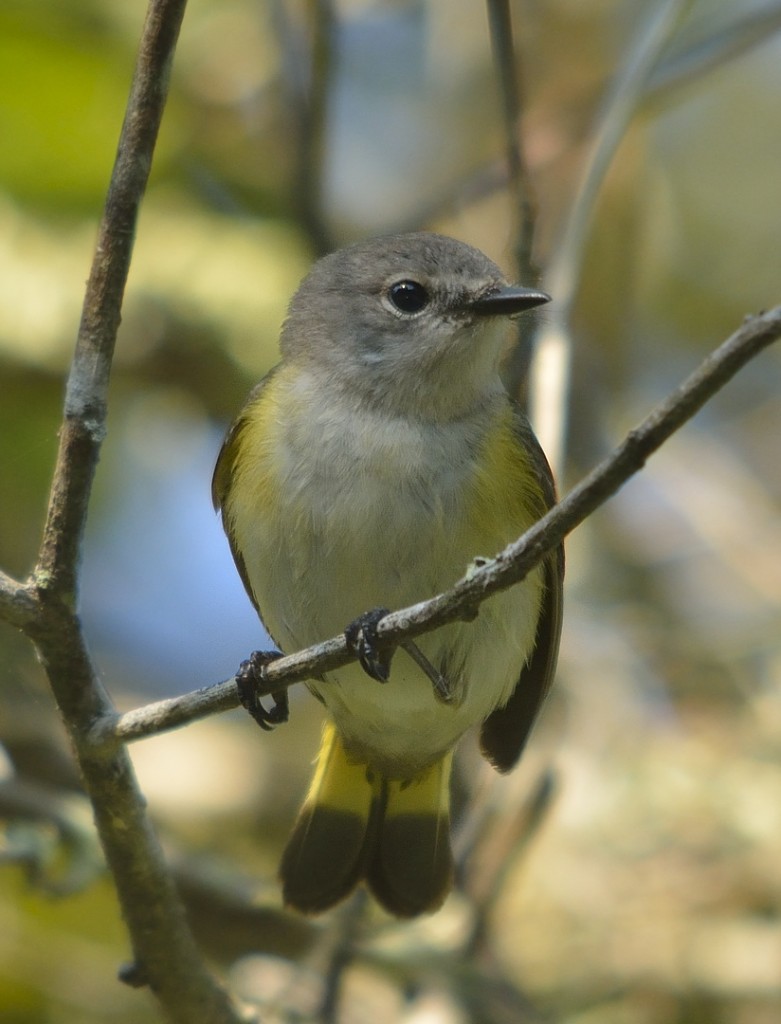
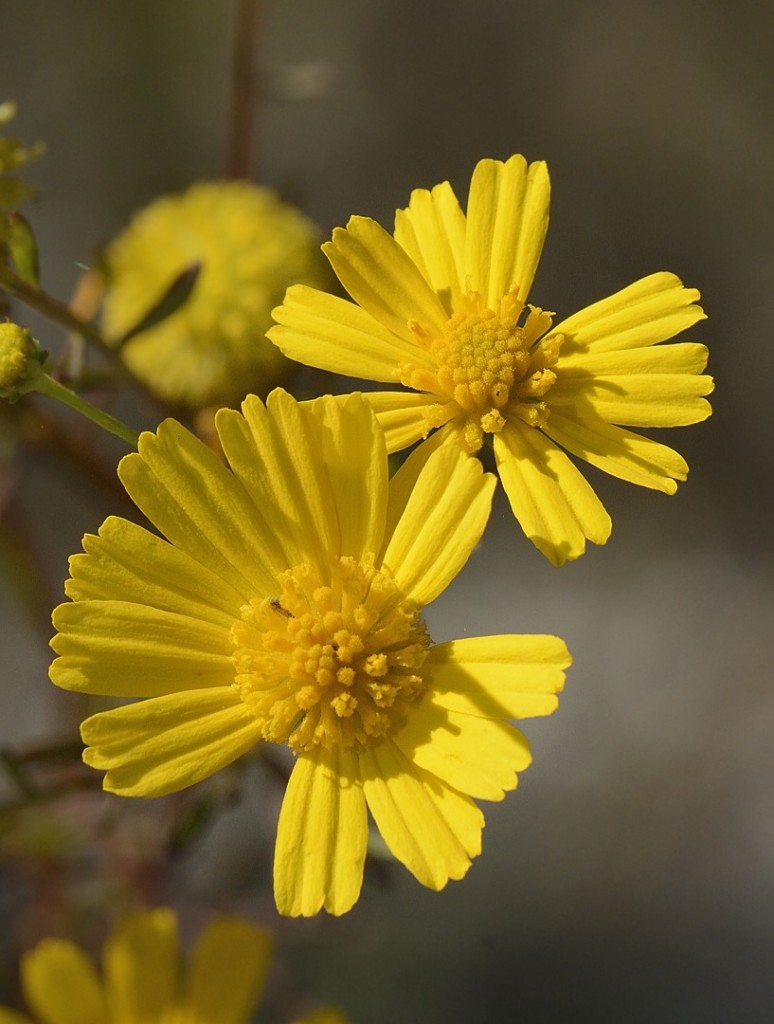
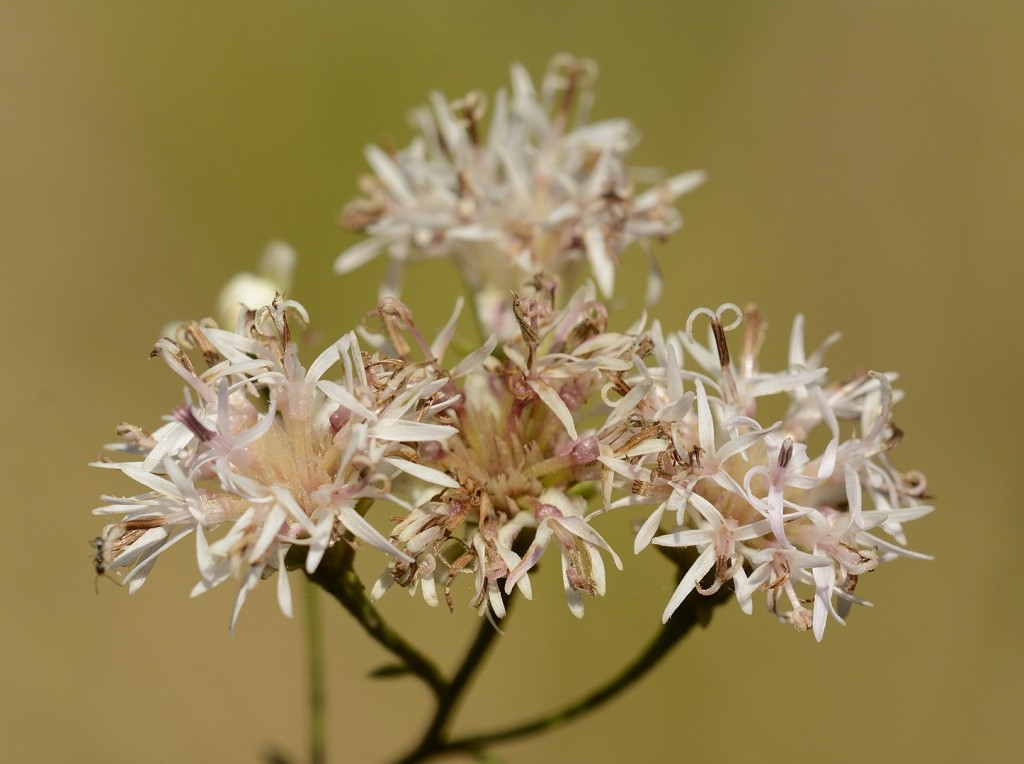
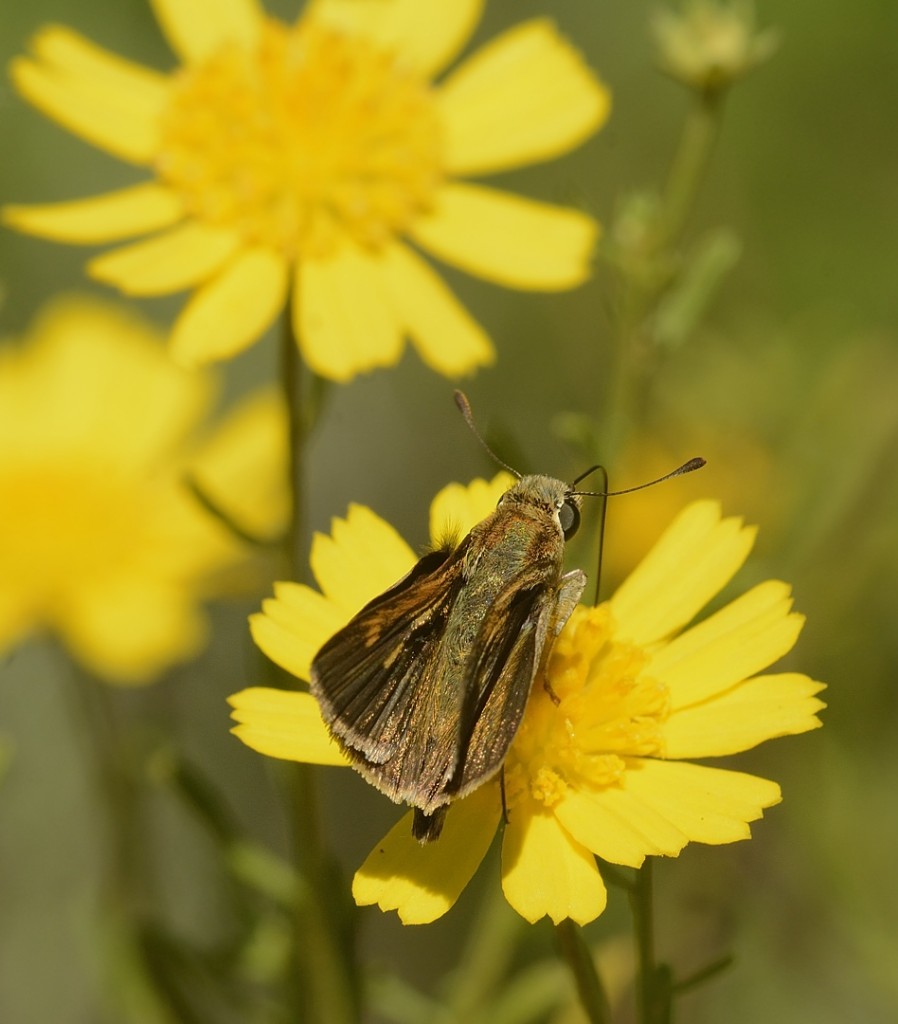
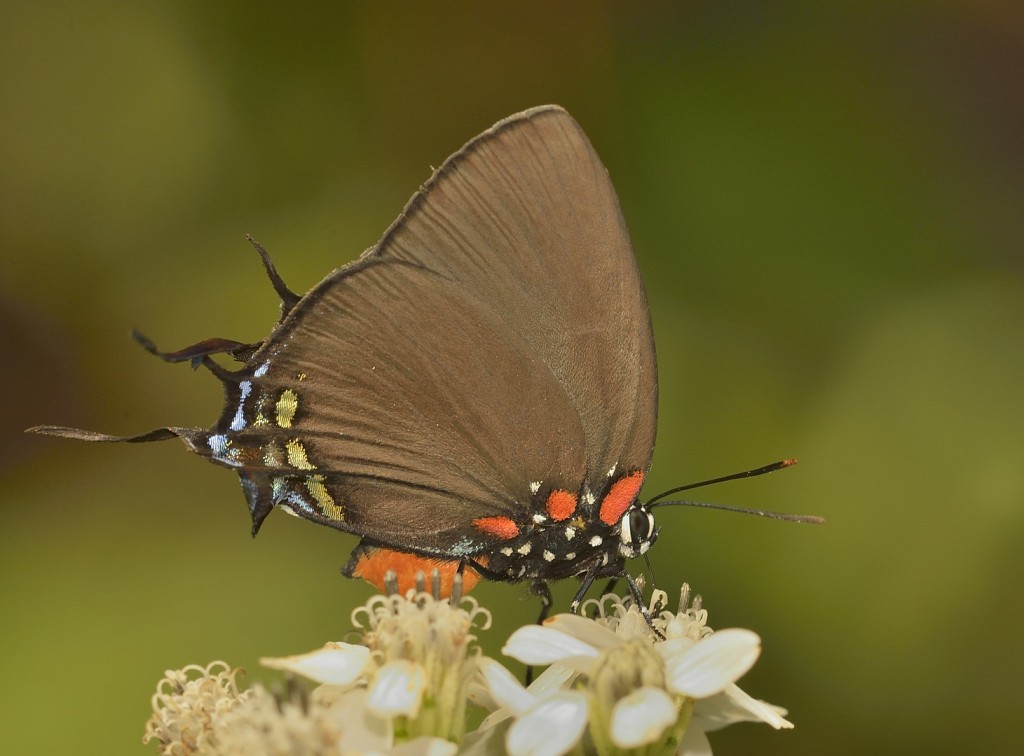
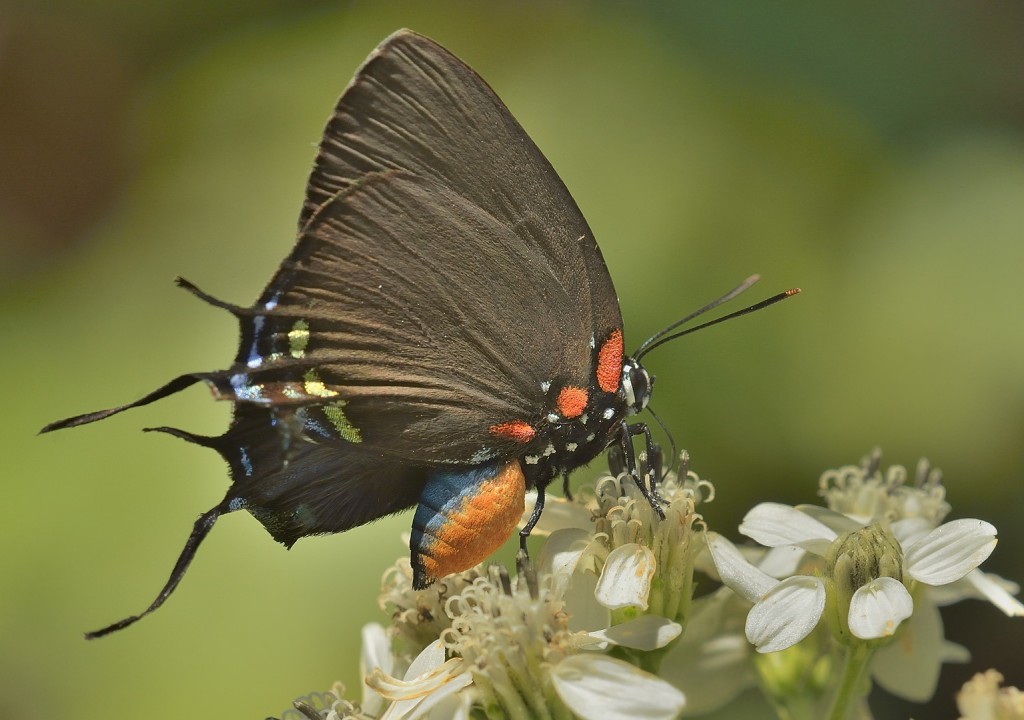
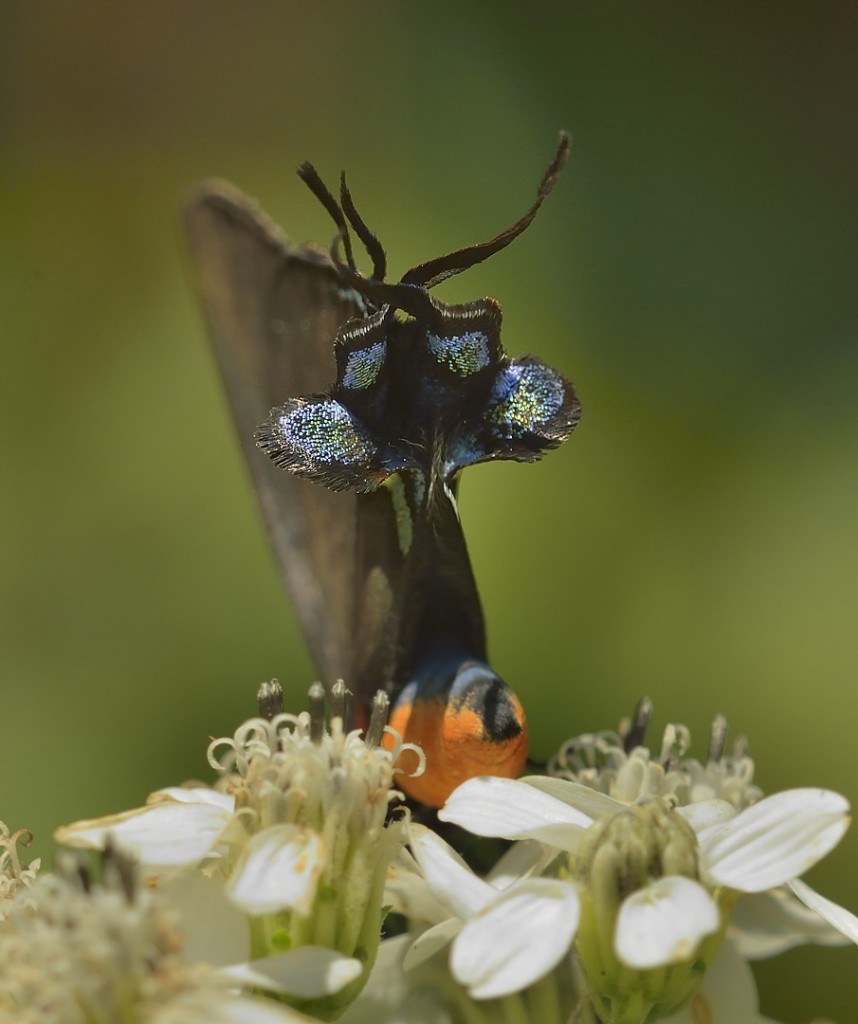
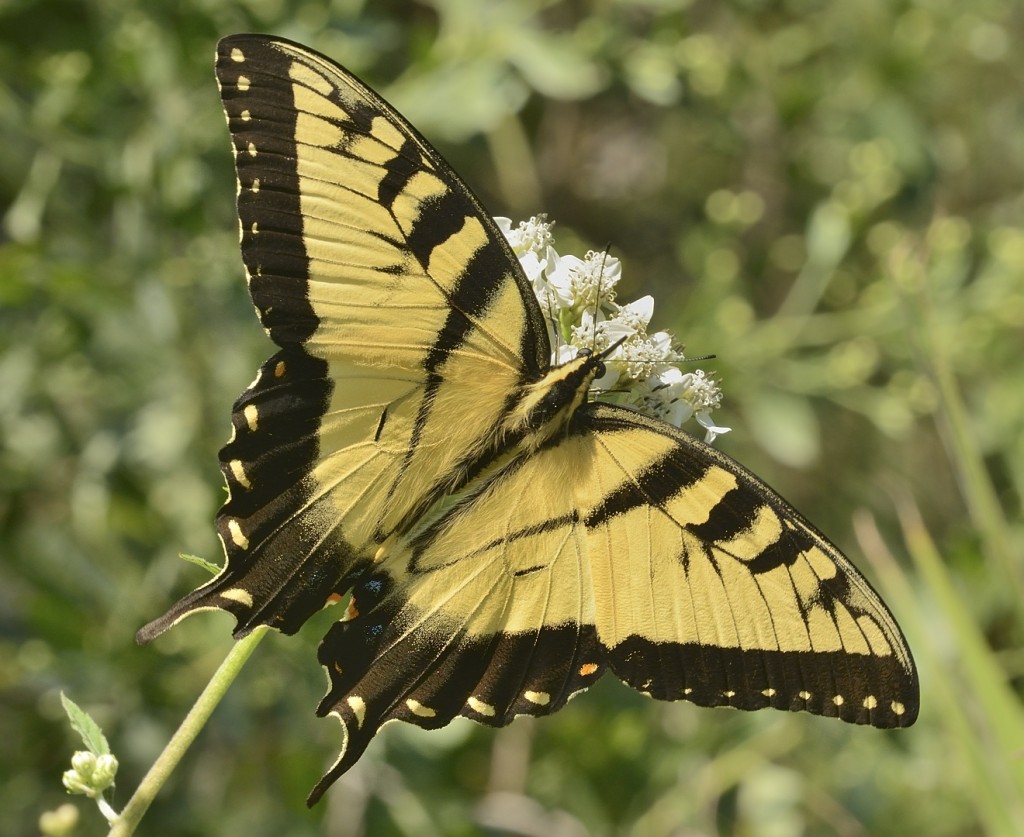
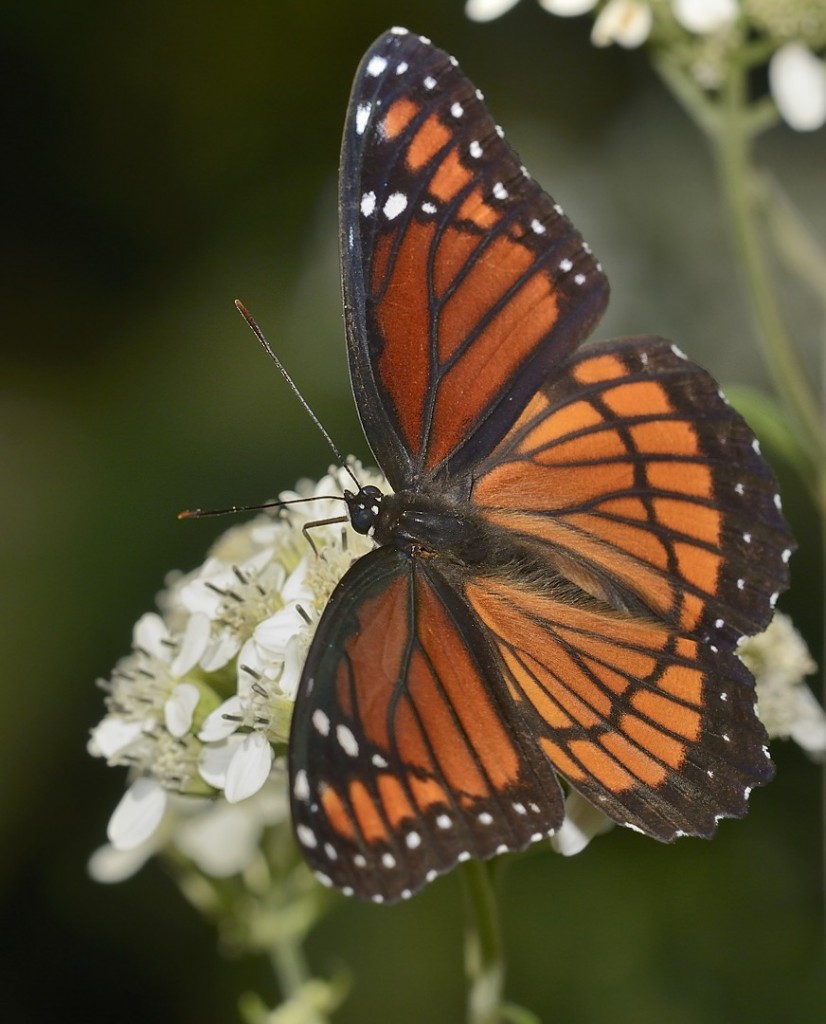
Great content!!!